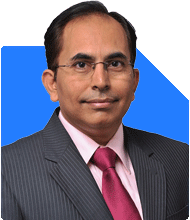
Sir, i am 62 yrs . i am investing 65,500/ per month in Regular Mutual Fund SIP since last two years : 1.ICICI Blue Chip Fund : 12000/-, 2. Canara Robeco Blue Chip Fund: 20000/-, 3. Mirae Asset Large Cap: 2000/-, 3. Quant Active Fund : 10000/-, 4, HDFC Flexi Cap: 5000/-, 5. PGIM Flexi Cap : 3000/- , 6. Canara Robeco Emerging Equities: 5000/-, 7. Mirae Asset Emerging Blue Chip: 2500/-
8. Axis Growth Opportunities: 3000/- and 9. Kotak Small Cap: 3000/-.
I have also lump sum investment of Rs. 17,57,000/- since last 2 yrs. : Rs. 75,000 Canara Robeco Small Cap. Rs. 390000/- HDFC Balanced Advantage, Rs. 4,00,000/- ICICI Equity & Debt Fund, Rs.235000/- PGIM Balanced Advantage, Rs. 190000/- PGIM Midcap Opportunities Fund, Rs. 150000/- Parag Parikh Flexi Cap Fund, Rs. 125000/- Quant Active Fund, Rs. 1,62,000/- SBI Flexi Cap Fund and Rs. 30000/- UTI Flexi Cap Fund.
Please let me whether : 1. With my above investment 2 Crore corpus can be achieved in next 5 yrs.
2. My investment in above funds are required to be continued or not.
I am looking forward your valuable advice.
With warm regards,
Tapan
Ans: Your commitment to investing is commendable. With a strategic approach, we can assess your portfolio and determine the feasibility of achieving a Rs. 2 crore corpus in the next five years. Let’s delve into the analysis and provide recommendations.
Evaluating Your SIP Investments
Your current monthly SIP investment of Rs. 65,500 is diversified across various funds, which is a positive approach. Here’s a brief evaluation:
ICICI Blue Chip Fund (Rs. 12,000)
Blue-chip funds are stable and provide steady returns. They are less volatile and suitable for long-term investments.
Canara Robeco Blue Chip Fund (Rs. 20,000)
Another blue-chip fund, enhancing the stability of your portfolio. It’s good to have a significant allocation here.
Mirae Asset Large Cap (Rs. 2,000)
Large-cap funds are relatively safe and provide consistent returns.
Quant Active Fund (Rs. 10,000)
Actively managed funds can potentially outperform the market, but come with higher risk.
HDFC Flexi Cap (Rs. 5,000)
Flexi cap funds provide diversification across market caps, offering a balance of growth and stability.
PGIM Flexi Cap (Rs. 3,000)
Another flexi cap fund, adding to the diversified approach.
Canara Robeco Emerging Equities (Rs. 5,000)
Emerging equity funds target mid and small-cap stocks, providing higher growth potential but with increased risk.
Mirae Asset Emerging Blue Chip (Rs. 2,500)
This fund balances between large and mid-cap stocks, providing a mix of stability and growth.
Axis Growth Opportunities (Rs. 3,000)
Growth funds aim for higher returns through aggressive investment strategies, suitable for a balanced risk profile.
Kotak Small Cap (Rs. 3,000)
Small-cap funds can deliver high returns, but they also come with significant risk.
Evaluating Your Lump Sum Investments
Your lump sum investments also show a good mix of fund types. Here’s an assessment:
Canara Robeco Small Cap (Rs. 75,000)
Small-cap funds, while risky, can provide substantial returns over time.
HDFC Balanced Advantage (Rs. 3,90,000)
Balanced funds provide a mix of equity and debt, offering moderate risk with steady returns.
ICICI Equity & Debt Fund (Rs. 4,00,000)
This hybrid fund further balances your risk and return profile.
PGIM Balanced Advantage (Rs. 2,35,000)
Another balanced fund, enhancing stability in your portfolio.
PGIM Midcap Opportunities Fund (Rs. 1,90,000)
Mid-cap funds offer higher growth potential than large-cap but are riskier.
Parag Parikh Flexi Cap Fund (Rs. 1,50,000)
Flexi cap funds provide diversification and can adapt to market changes.
Quant Active Fund (Rs. 1,25,000)
Active funds aim for market outperformance but come with higher volatility.
SBI Flexi Cap Fund (Rs. 1,62,000)
Flexi cap funds add to the diversified nature of your portfolio.
UTI Flexi Cap Fund (Rs. 30,000)
Another flexi cap fund, maintaining diversification.
Assessing the Feasibility of a Rs. 2 Crore Corpus
Given your current investments, achieving a Rs. 2 crore corpus in five years is possible but challenging. It depends on market performance and consistent returns. Historically, equity mutual funds can offer 10-12% annual returns, but this is not guaranteed.
Recommendations for Continued Investment
Maintain Diversification
Your portfolio is well-diversified. Continue this strategy to manage risk effectively.
Increase Equity Exposure Cautiously
Consider slightly increasing your SIP amounts in high-growth funds like small-cap and mid-cap funds if you are comfortable with higher risk.
Review and Rebalance Annually
Regularly review your portfolio’s performance and rebalance annually to ensure it aligns with your goals.
Consider Systematic Withdrawal Plans (SWP)
As you approach your goal, consider shifting some investments to safer options and use SWPs to manage withdrawals systematically.
Stay Informed
Keep abreast of market trends and economic factors that might impact your investments.
Evaluating Specific Fund Choices
Blue Chip Funds
Blue-chip funds are a safe bet. Ensure that you have a substantial allocation here for stability.
Flexi Cap Funds
Flexi cap funds provide flexibility and diversification across market caps, which is beneficial.
Small and Mid-Cap Funds
These funds offer high growth potential but be mindful of their volatility. Balance their proportion to match your risk tolerance.
Balanced Advantage and Hybrid Funds
These funds are excellent for maintaining a balance between growth and safety. They should form a core part of your portfolio as you near your goal.
Aligning Investments with Financial Goals
Short-Term Goals
For any short-term financial needs, consider safer investment options like debt funds or fixed deposits.
Medium-Term Goals
Balanced funds or hybrid funds are suitable for medium-term goals, offering a balance of growth and stability.
Long-Term Goals
Continue with your equity investments for long-term goals. Equities typically provide higher returns over a long period.
Ensuring Tax Efficiency
Invest in funds that provide tax benefits under Section 80C to optimize your tax savings. Balanced funds and equity-linked savings schemes (ELSS) can be considered for this purpose.
Importance of Professional Guidance
Consulting a Certified Financial Planner can provide personalized advice. They can help you adjust your portfolio based on your financial situation and goals.
Conclusion
Your current investment strategy is robust and well-diversified. With careful planning and regular monitoring, achieving a Rs. 2 crore corpus in the next five years is within reach. Continue your disciplined investment approach and consider professional guidance for optimal results.
Best Regards,
K. Ramalingam, MBA, CFP,
Chief Financial Planner,
www.holisticinvestment.in


























